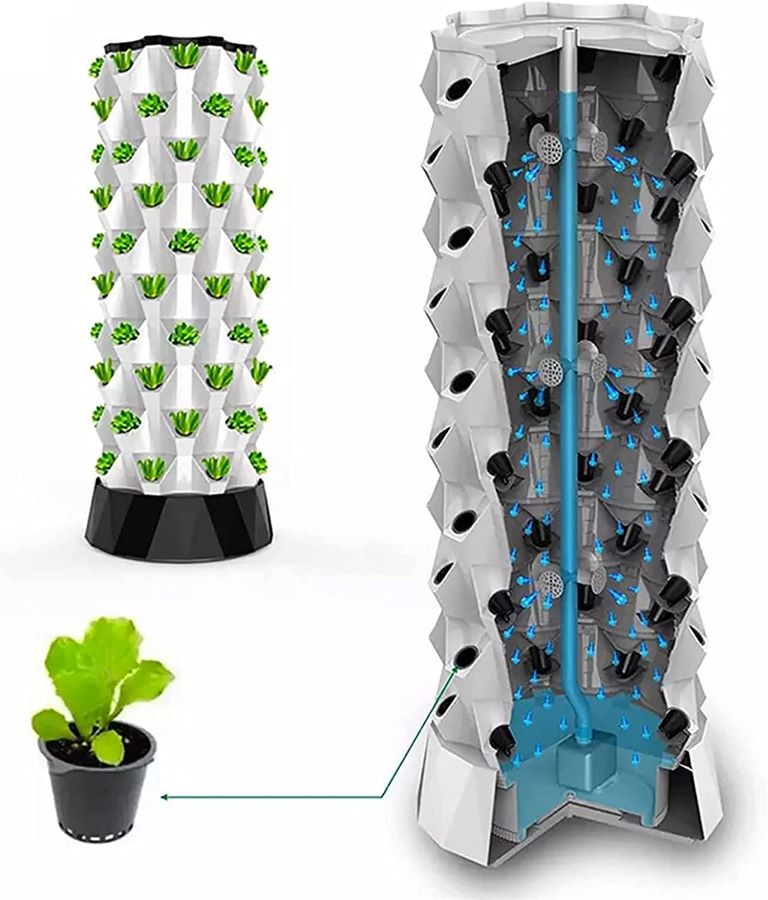The Future of Farming: How Aeroponic Hydroponic Systems are Changing the Game
Introduction
In an era marked by the increasing need for sustainable and efficient farming methods, the traditional practices of agriculture face numerous challenges.
However, an innovative solution has emerged: Aeroponic Hydroponic Systems.
These cutting-edge systems are revolutionizing how we grow crops and potentially transforming the future of farming.
This article explores aeroponic hydroponics, its mechanics, advantages over traditional methods, and far-reaching implications for sustainable agriculture.
Provo Green Products is your reliable source for discovering sustainable products that can positively impact your life and the environment.
With extensive experience in manufacturing, trades, and construction, Provo Green Products thoroughly researches each product before providing accurate and up-to-date information on its sustainability.
You can trust that you’re getting trustworthy insights to make informed choices whether you’re looking for solar products, electric bikes, eco-friendly products, renewable energy solutions, etc.
Provo Green Products is your go-to destination for finding the right green products for your lifestyle.
Disclosure: We may earn a small commission if you click on one of our links.
This does not affect the pricing of the product whatsoever.
Understanding Aeroponic Hydroponic Systems
We must first understand their fundamental principles to comprehend the impact of aeroponic hydroponic systems.
Aeroponics combines the concepts of hydroponics and aerodynamics, creating a growing environment where plants are suspended in air and receive nutrients through a fine mist.
Plants have direct access to nutrients and oxygen by eliminating the need for soil, resulting in accelerated growth and development.
This soil-less cultivation method has several advantages over traditional farming practices.
Increased Crop Yield and Quality
One of the critical advantages of aeroponic hydroponic systems is their ability to maximize crop yield and quality.
These systems optimize the plant’s growth potential by controlling nutrient delivery and absorption.
Nutrients are dissolved in water and then sprayed directly onto the roots, ensuring efficient absorption and eliminating nutrient wastage.
Moreover, the absence of soil-borne pests and diseases minimizes the risk of crop damage, resulting in healthier plants and higher yields.
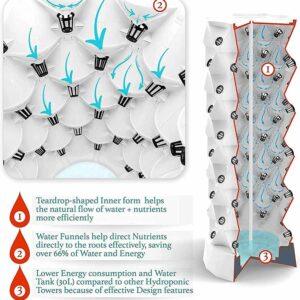
Water and Resource Conservation
Aeroponic hydroponic systems offer significant advantages in terms of water and resource conservation.
Traditional farming methods require substantial amounts of water lost through evaporation and runoff.
In contrast, aeroponic systems use misting to deliver nutrients directly to the plants, reducing water consumption by up to 95% compared to traditional methods.
Additionally, the absence of soil eliminates the need for extensive land use and conserves resources such as fertilizers and pesticides.
Overcoming Limitations and Challenges
While aeroponic hydroponic systems offer numerous benefits, they also present challenges that must be addressed.
Maintenance and monitoring requirements, including regular checks on nutrient levels, pH balance, and system functionality, demand attention and expertise.
Furthermore, the initial setup costs and infrastructure needed for aeroponic systems can be substantial.
However, as technology advances and knowledge about these systems increases, these limitations can be mitigated, making aeroponics a viable option for sustainable farming.
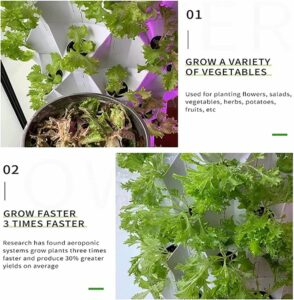
Applications and Case Studies
Aeroponic hydroponic systems have applications in various sectors, including commercial agriculture, urban farming, and vertical farming.
In commercial agriculture, these systems offer increased productivity, allowing farmers to cultivate crops in controlled environments regardless of geographical limitations.
Urban farming benefits from the space-saving nature of aeroponics, making it possible to grow fresh produce in densely populated areas.
Several successful case studies, such as rooftop gardens and indoor vertical farms, demonstrate the potential of aeroponics in practice.
Advancements and Future Potential
As technology advances, aeroponic hydroponic systems are poised to transform the agricultural landscape further.
Integration with artificial intelligence (AI) and automation can optimize resource allocation, monitor plant health, and predict growth patterns.
Such advancements hold promise for increased efficiency and reduced labor requirements.
Moreover, the potential impact of aeroponics on food security and sustainable agriculture is significant, as these systems can be implemented in diverse environments, from arid regions to urban settings.
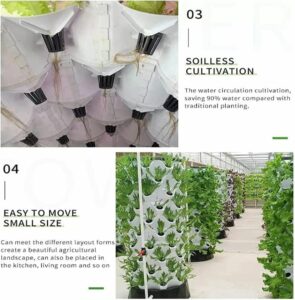
Environmental Impact and Sustainability
A key consideration in modern agriculture is the environmental impact of farming practices.
Aeroponic hydroponic systems offer several sustainability advantages, including a reduced carbon footprint compared to conventional farming.
By eliminating the need for extensive land use and minimizing water usage, aeroponics significantly reduces the environmental strain associated with traditional agriculture.
The controlled environment of aeroponic systems also helps minimize the use of pesticides and fertilizers, further reducing the risk of chemical runoff and contamination of water sources.
Additionally, repurposing unused spaces, such as abandoned buildings or rooftops, for aeroponic farming contributes to land conservation and using urban areas for food production.
Economic and Social Implications
The adoption of aeroponic hydroponic systems has significant economic and social implications.
These systems offer opportunities for job creation within the agricultural sector, including roles in system design, maintenance, and crop management.
As aeroponics gains popularity, there is a growing need for skilled professionals to implement and operate these advanced systems.
Moreover, the availability of fresh produce in urban areas through urban farming initiatives powered by aeroponics enhances food accessibility and promotes healthy eating habits.
The impact on local economies should be noticed. By establishing local aeroponic farms, communities can reduce their dependence on imported produce, supporting local farmers and enhancing regional food security.
Furthermore, aeroponic systems can strengthen local food supply chains, allowing for faster and more efficient delivery of fresh produce to nearby markets and restaurants.
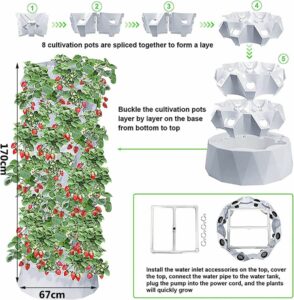
Conclusion
Aeroponic hydroponic systems represent a groundbreaking advancement in the field of agriculture.
With the ability to optimize crop yield, conserve water and resources, overcome traditional limitations, and contribute to environmental sustainability, these systems are changing the game in farming.
While there are challenges to overcome, such as maintenance requirements and initial setup costs, ongoing technological advancements, and increased knowledge will address these limitations.
The applications of aeroponics in commercial agriculture, urban farming, and vertical farming demonstrate its versatility and potential impact.
Moreover, integrating AI and automation holds promise for further improving efficiency and productivity.
The environmental benefits, including reduced carbon footprint and resource conservation, contribute to developing a more sustainable and resilient food system.
From an economic and social perspective, adopting aeroponic hydroponic systems creates job opportunities and promotes local economies.
The availability of fresh produce in urban areas enhances food accessibility and supports healthier lifestyles.
The future of farming is here, and it lies in the transformative power of aeroponic hydroponics.
As we look to the end of agriculture, aeroponic hydroponic systems emerge as a promising solution that addresses the challenges faced by traditional agriculture.
We can pave the way for a more sustainable, efficient, and resilient agricultural industry by embracing these innovative systems.
Stay in Touch!
I’am a dedicated entrepreneur with many years of experience and an integrity-driven individual who is highly motivated to succeed. Leveraging extensive expertise in manufacturing, construction, and various trades, we can provide a solid foundation for sustainable living. Our meticulous research process guarantees that our information about each product is precise and current, allowing you to make informed decisions. A deep understanding of business operations empowers me to consistently implement improvements that result in ongoing success. Visit site.

